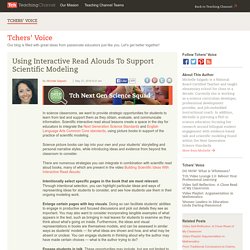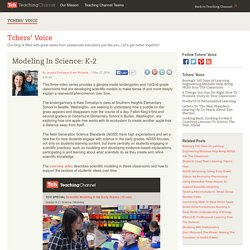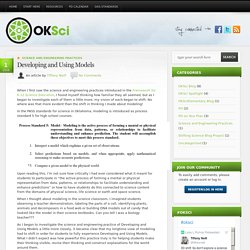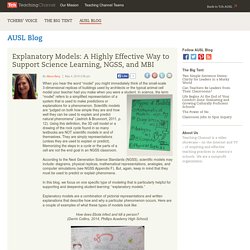

Using Interactive Read Alouds To Support Scientific Modeling. In science classrooms, we want to provide strategic opportunities for students to learn from text and support them as they obtain, evaluate, and communicate information.

Scientific interactive read aloud lessons create a space in the day for educators to integrate the Next Generation Science Standards and English Language Arts Common Core standards, using picture books in support of the practice of scientific modeling. Science picture books can tap into your own and your students’ storytelling and personal narrative styles, while introducing ideas and evidence from beyond the classroom to consider. There are numerous strategies you can integrate in combination with scientific read aloud books, many of which are present in the video Building Scientific Ideas With Interactive Read Alouds: Intentionally select specific pages in the book that are most relevant. Enlarge certain pages with key visuals. Engage students in talk. Make student thinking visible. Modeling In Science: K-12. This three-video series provides a glimpse inside kindergarten and 1st/2nd-grade classrooms that are developing scientific models to make sense of and more deeply explain a real-world phenomenon over time.

The kindergartners in Kaia Tomokiyo’s class at Southern Heights Elementary School in Seattle, Washington, are seeking to understand how a puddle on the grass appears and disappears over the course of a day. Fallon King’s first and second graders at Cedarhurst Elementary School in Burien, Washington, are exploring how one apple tree works with its ecosystem to create another apple tree a distance away from itself. The Next Generation Science Standards (NGSS) have high expectations and set a new bar for how students engage with science in the early grades.
The overview video describes scientific modeling in these classrooms and how to support the revision of students’ ideas over time. Grades K-2 / Science / Modeling Please enable Javascript to watch this video. Developing and Using Models - OKSci Teachers OKSci Teachers. When I first saw the science and engineering practices introduced in the Framework for K-12 Science Education, I found myself thinking how familiar they all seemed, but as I began to investigate each of them a little more, my vision of each began to shift.

No where was that more evident than the shift in thinking I made about modeling! In the PASS standards for science in Oklahoma, modeling is introduced as process standard 5 for high school courses. Upon reading this, I’m not sure how critically I had ever considered what it meant for students to participate in “the active process of forming a mental or physical representation from data, patterns, or relationships to facilitate understanding and enhance predictions” or how to have students do this connected to science content from the domains of physical science, life science or earth and space science. If you find yourself still wondering what it means for modeling to be utilized in this way, you are not alone. Explanatory Models: A Highly Effective Way to Support Science Learning, NGSS, and MBI. When you hear the word “model” you might immediately think of the small-scale 3-dimensional replicas of buildings used by architects or the typical animal cell model your teacher had you make when you were a student.

In science, the term “model” refers to a si mplified representation of a system that is used to make predictions or explanations for a phenomenon. Scientific models are “judged on both how simple they are and how well they can be used to explain and predict natural phenomena” (Jadrich & Bruxvoort, 2011, p. 12). Using this definition, the 3D cell model or a drawing of the rock cycle found in so many textbooks are NOT scientific models in and of themselves.
They are simply representations (unless they are used to explain or predict). According to the Next Generation Science Standards (NGSS), scientific models may include: diagrams, physical replicas, mathematical representations, analogies, and computer simulations (see NGSS Appendix F). Don’t give the answers away! Developing Understanding Through Model Based Inquiry. Developing a learning progression for scientific modeling. Models-and-Modeling - An Introduction. Explanatory Models: A Highly Effective Way to Support Science Learning, NGSS, and MBI. Engaging students in Scientific Practices.